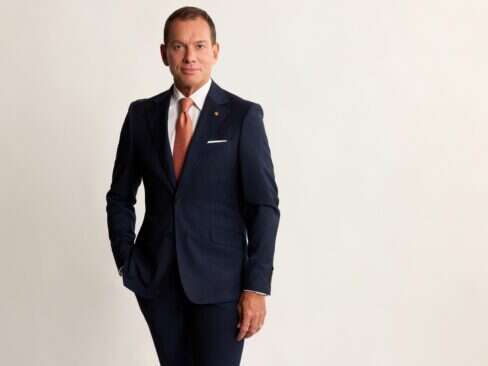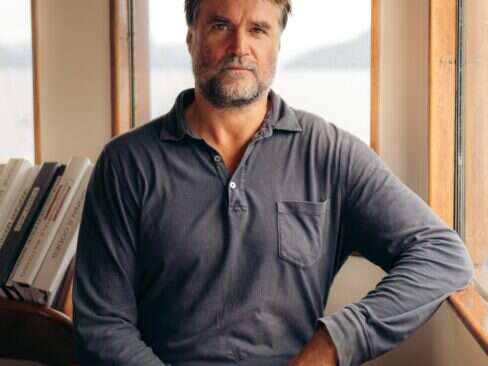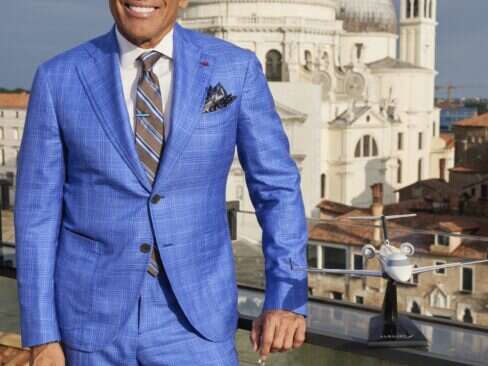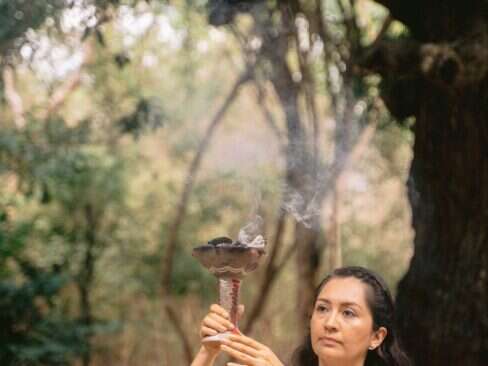As the world of luxury seeks new levels of rarity, pink diamonds are gaining attention not only for their beauty but from investors and connoisseurs worldwide. Elite Traveler’s Editor-in-Chief caught up with West shortly after he attended the New York preview of the annual Argyle Tender—the latest pink diamond offerings from Australia’s legendary Argyle mine.
 If Laurence Graff is the King of Diamonds, Larry West may be the King of Pink Diamonds.
If Laurence Graff is the King of Diamonds, Larry West may be the King of Pink Diamonds.
Elite Traveler: How did you get into the diamond business?
Larry West: My father was in the business, primarily selling small diamonds – melee – to jewelry manufacturers. In 1973, while I was away at college, my father died very suddenly. I came home to help my mother and my sister with the business and things just evolved. In 1978 I incorporated and named the company L.J. West Diamonds.
ET: How did you start growing the company?
LW: In the early ‘80s one of my customers asked me to go to Hong Kong, and I experienced a series of epiphanies while there. Up until then I had been selling only small diamonds, but I noticed that in Hong Kong and Singapore customers had an appetite for larger stones. So I began borrowing carat-sized and up — round stones and fancy-shaped — from diamond cutters in New York, and selling them on consignment. The business really took off.
ET: How did you begin to trade in colored diamonds?
LW: I was re-cutting larger white diamonds to add value to them when I met a manufacturer in Hong Kong who created beautiful, award-winning colored diamond jewelry. He was European-trained…old school…one of Argyle’s very first customers. I remember buying my first lot of pink diamonds and reselling them in Hong Kong with this jeweler. I became fascinated by the world of Natural Fancy Color Diamonds …and I have been ever since.
ET: And when did the pink diamond business really take off for L.J. West?
LW: It was in the early ‘90s. At that time the market leaders were the Japanese; they were buying up all the real estate in New York, all the fine cars. Then the bottom dropped out and more than a few big diamond players got their fingers singed. It was a good time to jump in, so I started buying from Argyle and soon I became the biggest buyer of Argyle Tender goods. In 2001 I bought the largest pink diamond ever sold in the Argyle Tender – over 4 carats — only to buy it back five years later. Then I resold it again. I wish I had that pink diamond today because the price has tripled!
ET: According to Argyle, production — including pink diamonds — is going down. So demand is going up?
LW: Throughout the ‘90s Argyle enjoyed their biggest production years–some 40% by weight of the world’s natural diamonds came out of this one mine. At that point, Argyle’s annual production was probably about 40 million carats, and pink diamonds represented less than a fraction of 1% of the total. Today they produce in the 10 million carat range, and the pink diamonds have remained at about the same percentage. There are many more customers for Argyle Pink Diamonds and they have less than a third as many pink diamonds as they had at their peak.
ET: What makes pink diamonds so special?
LW: The idea of the color. If you study it you realize it’s not as simple as white diamonds, where you have a chart for color, size and weight; you can look a diamond up and come pretty close to a price point and value for the stone. The GIA now has a 3-dimentional graph depicting how Fancy Color Diamonds are graded. You have the concept of the hue, which is the color, which can vary even among pinks — pinkish towards the orange or towards the purple. Then you have intensity of the color, which the GIA calls saturation. You also have darkness, which they call tone. There is this interplay of tone, saturation and hue, but there are also many variations of all three factors. This interplay is, I think, the most interesting and most difficult concept to analyze. That’s one of the attractions of Natural Color Diamonds for me.
ET: Do you ever think about where the pink diamonds you sell end up?
LW: Our pink diamonds end up with some very wealthy people, and some very smart people. We’ve had red diamonds bought by the heads of large investment funds, and of course movie stars and celebrities love their pink diamonds. It’s usually someone who graduates from beautiful white diamonds to different colors…sometimes it’s an investor who just wants the rarest of the rare. You’d be surprised how knowledgeable some private customers are about these colored stones; they can be worth easily twenty times the price of the best white diamonds.
ET: When you’re buying pink diamonds from Argyle, do you sometimes re-cut them?
LW: Yes. Even though there’s not an exact correlation between prices and grades from the GIA, there are definite advantages with certain grades. If you can jump from a Fancy Intense Pink to a Fancy Vivid Pink or from a Fancy Deep Pink to a Fancy Red, you can definitely add value while making the diamonds more beautiful and rare.
ET: Would you like L.J. West to become a household name like Harry Winston or Graff?
LW: Not at all. I’ve always been in the wholesale business and that’s the way I like it. I like that you can’t buy these diamonds directly from me, which forces a buyer to go through another expert. It really does take an intermediary to act as an advocate for someone who wants to buy these Natural Color Diamonds. There is a definite role for the expert retailer or gemologist to represent the buyer.
ET: And now your son is at L.J. West with you?
LW: I have one son, Scott, and he’s doing great. He’s very good at understanding and analyzing these colored stones. Scott is taking over a lot of the roadwork, attending the international shows which are so important to our business. In fact, we both just returned from Hong Kong, where we attended the jewelry show and the Argyle Tender. We’re lucky we both feel the same emotional attachment to understanding Natural Fancy Color Diamonds. I guess it runs in the family!










